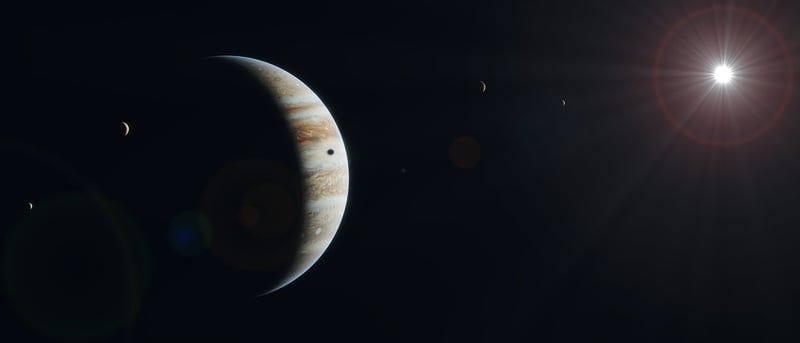Jupiter's Moons
Exploring the Wonders of Celestial Bodies and Jupiter's Moons
Have you ever looked up at the night sky and wondered about the vast expanse of celestial bodies that exist beyond our planet? From distant galaxies to our very own Moon, the universe is teeming with wonders waiting to be explored. In this article, we will delve into the fascinating world of celestial bodies and take a closer look at the mesmerizing moons of the largest planet in our solar system, Jupiter.
Celestial Bodies
Celestial bodies are natural objects that exist in space, such as planets, moons, asteroids, comets, and stars. These cosmic entities play a crucial role in shaping the universe and are a source of endless fascination for astronomers and space enthusiasts alike.
Types of Celestial Bodies:
- Planets: These are large celestial bodies that orbit around stars, including our own planet, Earth.
- Moons: Natural satellites that orbit planets, like Earth's Moon or Jupiter's moons.
- Asteroids: Small rocky bodies that orbit the Sun, primarily found in the asteroid belt between Mars and Jupiter.
- Comets: Icy bodies that orbit the Sun and develop a visible coma or tail when they approach the star.
- Stars: Luminous spheres of plasma held together by gravity, like our Sun.
Jupiter's Moons
Jupiter, the largest planet in our solar system, boasts a stunning array of moons that orbit around it. These moons, also known as the Jovian moons, offer a glimpse into the diverse and dynamic nature of celestial bodies in our cosmic neighborhood.
Key Moons of Jupiter:
- Io: The most volcanically active body in the solar system, with over 400 active volcanoes.
- Europa: Covered in a layer of ice, Europa is believed to have a subsurface ocean that could harbor life.
- Ganymede: The largest moon in the solar system, even bigger than the planet Mercury.
- Callisto: Known for its heavily cratered surface, Callisto is one of the oldest moons in the solar system.
Exploring the moons of Jupiter not only offers insights into the geological diversity of these celestial bodies but also raises intriguing questions about the potential for life beyond Earth.
Conclusion
As we gaze up at the night sky, let us marvel at the beauty and complexity of celestial bodies that populate our universe. Whether it's the distant galaxies or the captivating moons of Jupiter, the cosmos never fails to inspire awe and wonder in all who dare to look up and dream.
So next time you find yourself under a starlit sky, remember that the universe is vast and full of mysteries just waiting to be uncovered.


Explore the wonders of space and let your imagination soar beyond the confines of our world.
